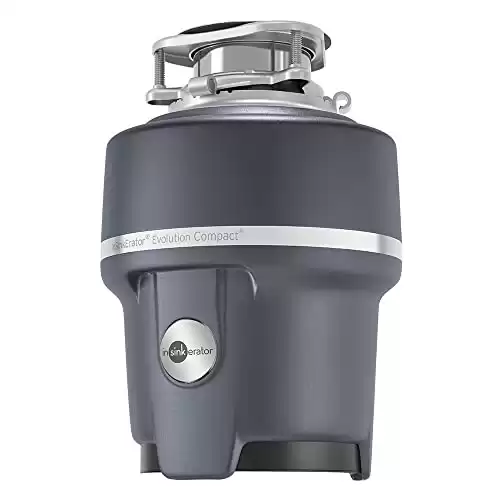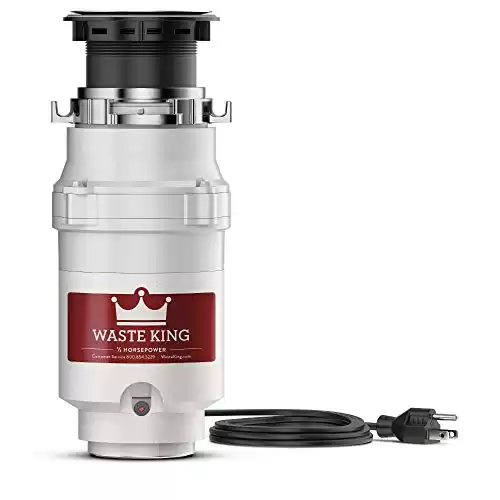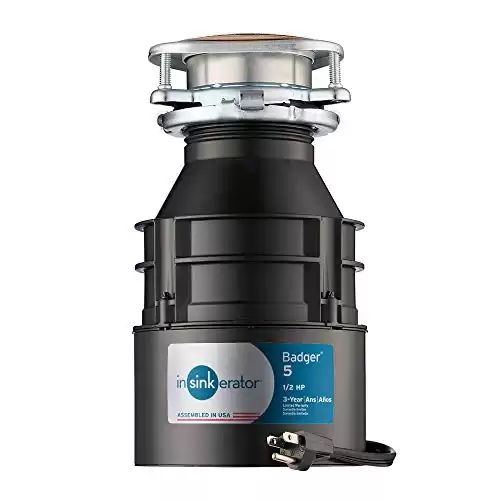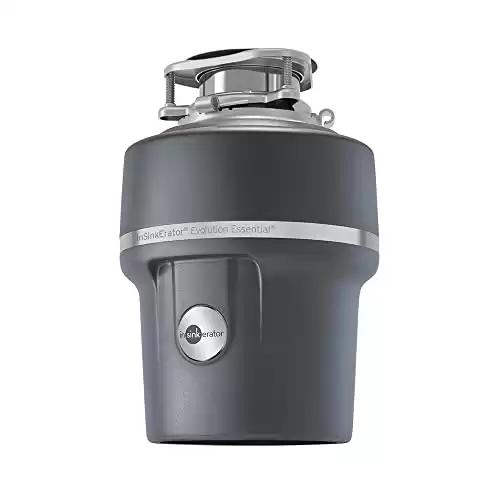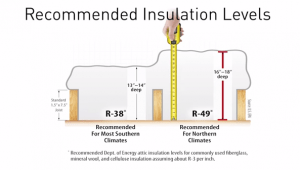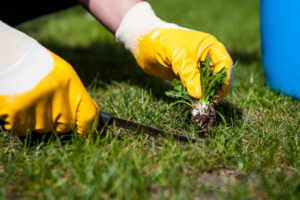Garbage Disposal Not Working? Try this

A malfunctioning garbage disposal can be a frustrating experience, leaving you with a sink full of food scraps and a non-functioning kitchen appliance. If you’ve found yourself in this situation, fear not! In this blog post, we will guide you through the troubleshooting process to help you identify and fix the issue with your garbage disposal. Let’s dive in!
Troubleshooting Your Garbage Disposal
1. Check the Power:
The first step is to ensure that your garbage disposal is receiving power. Check if it’s plugged in properly and if the circuit breaker hasn’t tripped. If everything appears to be fine, move on to the next step.
2. Reset the Disposal:
Many garbage disposals have a reset button located at the bottom or side of the unit. Pressing this button can often resolve minor issues and get your disposal up and running again. Give it a try and see if it makes a difference.
3. Clear any Blockages:
A common cause of a malfunctioning garbage disposal is a clog or blockage in the grinding chamber. Turn off the power to the disposal and use a flashlight to inspect the area. Remove any visible debris using tongs or pliers. Avoid using your hands to prevent any injuries.
4. Use the Allen Wrench:
Most garbage disposals come with an Allen wrench specifically designed for troubleshooting. Locate the hexagonal hole at the bottom of the disposal and insert the wrench. Rotate it back and forth to manually free any obstructions that may be causing the problem.
5. Check for Jammed Impellers:
If you hear a garbage disposal humming sound but doesn’t spin, it may indicate jammed impellers. Look for a small hole underneath the disposal and insert an Allen wrench or a wooden spoon handle. Gently rotate it to dislodge any stuck objects in the clogged garbage disposal, and then try turning on the disposal again.
6. Test the Motor:
If none of the above steps work, it’s possible that the motor of your garbage disposal has burned out or malfunctioned. To check this, use a multimeter to test the power supply to the motor. If there’s no power or if the reading is significantly low, it may be time to consider replacing the unit.
Buying a New Garbage Disposal
There are generally two main types of garbage disposals available on the market:
1. Continuous Feed Garbage Disposals:
– Continuous feed disposals are the most common type and are widely used in residential kitchens.
– They feature a switch or wall-mounted control that allows you to turn on the disposal while adding food waste.
– These disposals can handle a continuous flow of waste and are convenient for disposing of large amounts of food at once.
– They are typically more affordable and easy to install.
2. Batch Feed Garbage Disposals:
– Batch feed disposals operate differently from continuous feed models.
– Instead of a switch, they use a stopper or cover to activate the unit. You must insert the stopper before turning on the disposal.
– These disposals are considered safer because they prevent accidental activation while your hand or utensils are in the disposal chamber.
– They are generally more expensive than continuous feed disposals and may require additional steps to dispose of large amounts of waste.
Both types of garbage disposals have their advantages and considerations, so it’s important to choose the one that best suits your needs and preferences. Additionally, within each type, there are different models and variations available from various manufacturers, offering different power levels, noise reduction features, and additional functionalities.
Our Best Garbage Disposal Picks
| Product Image | Product Name / Price | Primary Button |
|---|---|---|
Replacing A Garbage Disposal
Replacing garbage disposal involves several steps to ensure a safe and proper installation. Here’s a general outline of the process:
1. Gather the necessary tools and materials:
– New garbage disposal unit
– Plumber’s putty or sealing compound
– Screwdriver (usually Phillips head)
– Adjustable wrench
– Bucket or container for catching water
– Towels or rags
2. Turn off the power:
– Locate the circuit breaker dedicated to the garbage disposal and switch it off.
– Double-check that the power is truly off by attempting to turn on the disposal.
3. Disconnect the old disposal unit:
– Remove the drain arm and dishwasher hose (if applicable) from the disposal unit.
– Loosen the metal ring or spring clamp connecting the disposal to the sink drain.
– Disconnect the electrical wiring from the disposal unit.
– Carefully remove the disposal unit from the mounting assembly.
4. Prepare the new disposal unit:
– Read the manufacturer’s instructions and familiarize yourself with the new unit.
– Attach the mounting assembly to the new disposal following the provided instructions.
5. Install the new disposal unit:
– Apply plumber’s putty or a sealing compound to the sink flange.
– Insert the sink flange into the sink opening and press it firmly in place.
– From under the sink, secure the mounting assembly and the new disposal unit using the provided hardware.
– Ensure the disposal unit is properly aligned and level.
6. Connect the plumbing:
– Reattach the drain arm and dishwasher hose (if applicable) to the new disposal unit.
– Tighten any necessary clamps or fittings to ensure a secure connection.
– Check for any leaks by running water through the disposal and inspecting for drips or moisture.
7. Reconnect the electrical wiring:
– Follow the manufacturer’s instructions for connecting the electrical wires to the new disposal unit.
– Make sure the connections are tight and secure.
8. Test the new disposal unit:
– Turn on the water and run it through the disposal to check for leaks.
– Restore power to the garbage disposal by switching on the dedicated circuit breaker.
– Test the disposal by turning it on and ensuring it operates smoothly and without any unusual noises.
9. Clean up and disposal of the old unit:
– Properly dispose of the old garbage disposal unit according to local regulations.
– Clean the surrounding area and check for any debris or leftover materials.
It’s important to note that the specific steps may vary depending on the brand and model of the garbage disposal unit, so always refer to the manufacturer’s instructions for detailed guidance. If you’re unsure or uncomfortable with any step of the process, it’s recommended to consult a professional plumber for assistance.
Summary
Facing a non-working garbage disposal can be frustrating, but with some troubleshooting and a little know-how, you can often resolve the issue yourself. Remember to prioritize safety by disconnecting power before attempting any repairs. If the problem persists or you’re uncomfortable performing the troubleshooting steps, it’s always wise to consult a professional plumber. Don’t let malfunctioning garbage disposal disrupt your kitchen routine—get it back up and running smoothly and efficiently!
Disclaimer: It’s important to exercise caution and ensure your own safety when troubleshooting or repairing any household appliances. If you’re unsure or uncomfortable with any step, it’s recommended to consult a professional.


